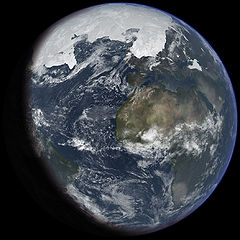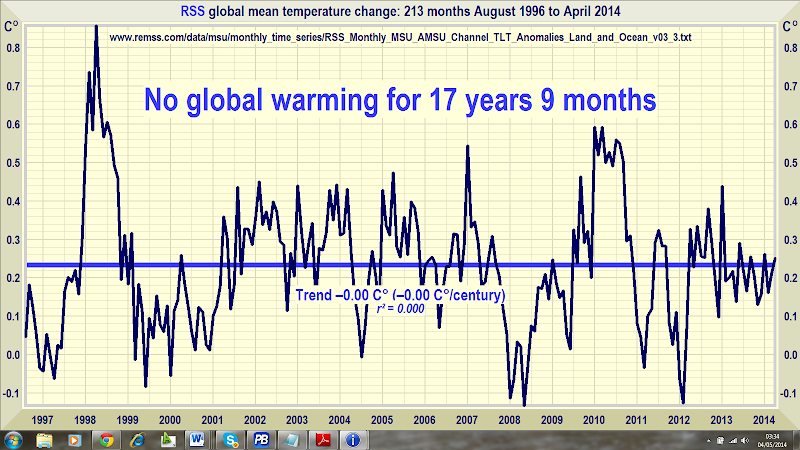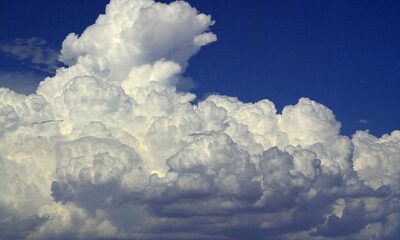News
Global warming, long term

The Blizzard of 2015 introduces a paradox into the global warming debate. It actually shows where global warming comes from. Global warming did not start with industrialization. It started long ago, at the peak of the Ice Age. The causes lie in and under the earth itself. And no act or policy of humanity started it, or can stop it.
Scientists confuse the global warming debate
A certain group of scientists have pushed the global warming idea more strenuously than others. These men – Phil Jones, Michael Mann, Keith Briffa, Kevin Trenberth, and NASA’s own Jim Hansen – made their names household names. Sadly they did so by exaggerating, not so much the problem as the role of humankind in it. They sought to accuse humanity, and more particularly its captains of industry, of wrecking the planet for their own short-term gain. So they tried to suggest a planet-wide disaster would befall the earth in their lifetimes. Hence Michael Mann’s hockey stick, Phil Jones’ use of “Mike’s Nature trick” to “hide the decline,” and Kevin Trenberth’s near-scream about the “travesty” that he and others couldn’t show a warming trend. And pieces like this in The New York Times, from 7 February 2014, actually talking of “the end of snow.”

According to the RSS satellite data, whose value for April 2014 is just in, the global warming trend in the 17 years 9 months since August 1996 is zero. The 212 months without global warming represents more than half the 423-month satellite data record, which began in January 1979. No one now in high school has lived through global warming. Source: Christopher, Viscount Monckton of Brenchley.
They and other scientists did worse than exaggerate. They suppressed any opinion different from theirs. That stunted the debate. And it still does.
They also let a certain class of politician, and ironically another class of business magnate, to use them for their own ends. Politicians like Barack Obama use the global warming idea to curtail people’s liberties. They look for a future in which no person, save a law-enforcement officer, an active-duty military service member, or a privileged person like themselves (or their chauffeurs), would so much as come within ten feet of a private automobile. That alone makes a population far easier to control. And business magnates like Rajendra Pachauri use the global warming idea for the business equivalent of such power-seeking: rent-seeking. They seek to force people to buy or rent their energy from them. (To his credit, Dr. Hansen recommends developing another source of concentrated energy, namely nuclear. He runs at odds with his fellows by graciously allowing the laypeople access to any sort of concentrated energy.)
Members of both groups must limit the supply of energy. Hence the stalling on the Keystone XL Pipeline, and the latest initiative to stop development of fossil-fuel resources in Alaska. The goal: leave the oil and natural gas in the ground. There it can benefit no one, and contribute to the liberty of no one.
All these things fuel skepticism. Worse for the global warming alarmists, they use short-term time frames to influence debate. So other scientists can oppose them with ridiculous ease. Including Christopher, Viscount Monckton of Brenchley. He wrote this piece showing no global warming has occurred in the last seventeen years and nine months.
But neither Lord Monckton nor Drs. Jones, Mann, Briffa, Trenberth, or Hansen have the real answer. None of them are thinking long-term. That’s one reason they missed the real global warming trend.
The long-term global warming trend
Walter T. Brown, of the Center for Scientific Creation, tells us of the real global warming trend. It runs for a far longer term: four thousand years or more, not barely a quarter of a millennium.
The warming trend happened after a severe cold snap. We call that cold snap the Ice Age. Brown explains:
The global flood produced the special conditions that caused the Ice Age: temporarily cold continents and warm oceans. [See pages 110–146.] Crashing hydroplates at the end of the flood crushed and thickened continents and buckled up the earth’s major mountains, making the continents temporarily higher and, consequently, colder than they are today. Also, after the flood, oceans were warmer than today, primarily because so much magma spilled onto the floor of the Pacific Ocean. Warm oceans produced extensive evaporation and precipitation, which on the cold continents resulted in extreme snowfall rates that built up glaciers. Heavy cloud cover and volcanic dust further cooled the continents.
[ezadsense midpost]
That happened fifty-three hundred years ago. The Blizzard of 2015 gives a small taste of what the Ice Age must have been like, and how it came about. A low-pressure cell over a warm ocean, brings moist air over cold land. The moisture precipitates out as snow. (That snow is falling now, at time of posting.) The lands did start to warm the minute the first glaciers started to retreat. But the oceans have their own source of heat: the magma immediately deep to the Pacific Basin. That same magma breaks out in the volcanoes that dot the Pacific Ocean, and form elsewhere. (Consider Mount Vesuvius in southern Italy, and Aetna, that now spell Etna, on Sicily.) And it has warmed the ocean enough to produce storms like the one that now will dump at least three feet of snow on Boston, Mass., and its suburbs, among other places.
Porter Fox at The New York Times wrote of an end of snow. He ought to have considered what global warming, from an ocean source, would really do. Not an end of snow. An excess of snow.
But this warming does something else. It liberates the carbon dioxide in the earth’s oceans. That, and not our smokestacks and tailpipes, produced the carbon dioxide in the atmosphere. And more: water vapor, not carbon dioxide, will trap the most heat from sunlight.
Where is the case against humankind?
Before one person can complain of another in a court of law, he must have standing to complain. Standing has three essential elements:
- Injury in fact,
- That you can blame on the person(s) you’re complaining of, and
- That someone in authority can do something about, or order someone else to do.
In global warming, certain people have an injury in fact. But by calling it anthropogenic, they tried to blame it on human industry and suggest a drastic remedy: de-industrialization. But global warming has run a course far longer than merely since the Industrial Revolution. One cannot blame it on one’s fellow human beings. Nor can one’s fellow human beings do anything to stop it.
That does not necessarily mean humans can do nothing to cope with it. Sadly, they can’t stop it or even slow it down. As Brown told CNAV this evening,
If you’re looking for any long-term investment, don’t invest in beachfront property.
Such property will suffer the greatest damage, then slip beneath the waves.
The scam about global warming was never whether it was happening, but whether one could blame humankind for it.
[ezadsense leadout]
Terry A. Hurlbut has been a student of politics, philosophy, and science for more than 35 years. He is a graduate of Yale College and has served as a physician-level laboratory administrator in a 250-bed community hospital. He also is a serious student of the Bible, is conversant in its two primary original languages, and has followed the creation-science movement closely since 1993.
-

 Civilization1 day ago
Civilization1 day agoDC Pipe Bomb Arrest Raises Questions About Christopher’s Wray’s FBI
-

 Executive4 days ago
Executive4 days agoThe Last Supper: New York’s Socialist Feast
-

 Civilization4 days ago
Civilization4 days agoYoo Hoo, VP Vance—Your Character is Showing!
-

 Guest Columns3 days ago
Guest Columns3 days agoCongressional Leaders See Far Higher Stock Returns Than Peers
-

 Civilization2 days ago
Civilization2 days agoThe Legal Logic Behind U.S. Operations Against Narco-Terrorist Networks
-

 Civilization4 days ago
Civilization4 days agoFacing Facts & Rolling Back Mythologies: The New National Security Strategy
-

 Civilization3 days ago
Civilization3 days agoHow Trump Changed America
-

 Civilization5 days ago
Civilization5 days agoWaste of the Day: Senators Earmarked Cash for Their Former Schools











I am confused by your premise. As I understand it, you are saying that global warming is occurring, for over 4000 years, but that this is caused by warming of the oceans due to magma at or below the ocean floor. But you also state that the oceans are colder now than they were just after the Flood (also that the continents were higher then as well). Smoke and ash in the air lessened solar heating (I assume) and the water vapor from the warm oceans fell as snow on the high, cold continents and led to an ice age. At some point the glaciers retreated, though – presumably through a combination of the oceans cooling and the continents sinking.
As a result of the warmer oceans 5000 yrs ago, was there more CO2 in the atmosphere then than there is now? You have stated that warm oceans release more CO2; also that the CO2 in the atmosphere today is from the warming oceans, not the burning of fossil fuels. And with the warm oceans there would have been more water vapor to trap more heat?
If the warm oceans after the Flood led to an ice age rather than global warming, why are warming oceans today leading to global warming instead of an ice age? Is it the sinking of the continents that makes the difference?
And just how did the oceans cool off and then start warming up _again_ after the Flood? They were initially heated by Flood-associated magma, then gradually lost heat over time, but now they are warming up again due to new magma? More magma? Why cool and then heat up again if the heat source is magma that formed once 5000 years ago and has been cooling off since?
If the oceans are being heated by magma from below, what would you expect the curve of ocean temperature vs. depth to look like? Especially if the ocean was warmer 5000 years ago due to magma all over the sea floor?
How much higher were the continents 5000 years ago than they are today? Are they still sinking, or has that process stopped? If they have stopped, when did that happen? For the Earth to lose 4% of its mass would require roughly a 50 mile decrease in its radius, all else being equal.
Agree with the article in general. But I see no reason why we shouldn’t at least try to alleviate, as much as we can, whatever tiny impact humans might have. It’s certainly obvious to me that all the air pollution we generate is a ‘bad thing’ no matter what way you look at it. It goes against the grain for an American to say “Nuthin’ to be done here, move along folks” – we’re a nation of doers, and there’s no challenge that we’ve yet been defeated by. Climate change is just another one. We won’t be able to stop it, but maybe we can stop just standing’ around with our hands in our pockets?
The only immediate impact carbon dioxide has, is a positive one: more plant growth, and especially better tree growth. We properly regard toxic and corrosive substances as “air pollution.” Carbon dioxide alone is neither.
Anything calculated to “reduce carbon dioxide emissions” is actually calculated to reduce economic activity and curtail mobility. And that is what the Barack Obamas of this world want.
(The Al Gores of this world merely want to scam the body politic. Al Gore does not believe what he says, not deep down where it counts. If he did, he would “reduce” his own “carbon footprint” as an example to all, much as Ed Begley, Jr. does.)
Genesis 8:22 settles the hoax for me.
You’re right – and water vapor is a natural byproduct of hydrocarbon combustion. The more hydrocarbons we burn, the more water vapor we churn into the atmosphere. And as the most important greenhouse gases, we ought to try to reduce the amount of it we make. I’m afraid that much as I’m against political attempts to curtail business, I do believe that God gave us this Earth to tend to, and we need to avoid poisoning our own well somehow. Loathe as I am to say it, I can’t see a way to do so without either building more fast breeder nuclear reactors, or in other ways reducing our dependence on hydrocarbons. If we just do nothing, it’s only going to get worse and worse. We might not be to blame, but we can at least try to change our destiny if we try to help ‘Ol Mother Earth.
Happily, those nuclear reactors you mention, of whatever design, have immediate value beyond serving some “common interest.” The best policy involves allowing their construction. To his credit, Dr. James Hansen, who carries the global warming torch at NASA as Phil Jones does at the CRU in England, argues in general for a nuclear-power solution.
[…] By Terry A. Hurlbut via Conservative News and Views […]
I still don’t see where the heat is coming from to warm the oceans in this model. If the melting of the mantle/core happened during the Flood, and all the radioactive elements were formed during the Flood, then the amount of heat available to warm the oceans from below should have been decreasing ever since. So once the oceans cooled off post-Flood, how can they be re-heated?
Also, if increased atmospheric CO2 is caused by degassing of warmer ocean water, then the CO2 content of the ocean should be falling, yes? Is it?